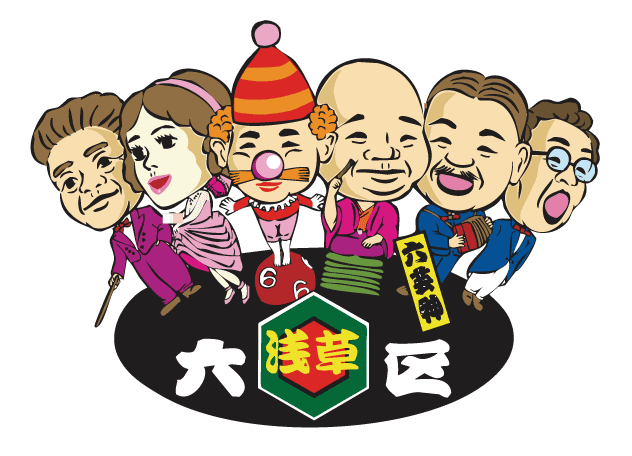
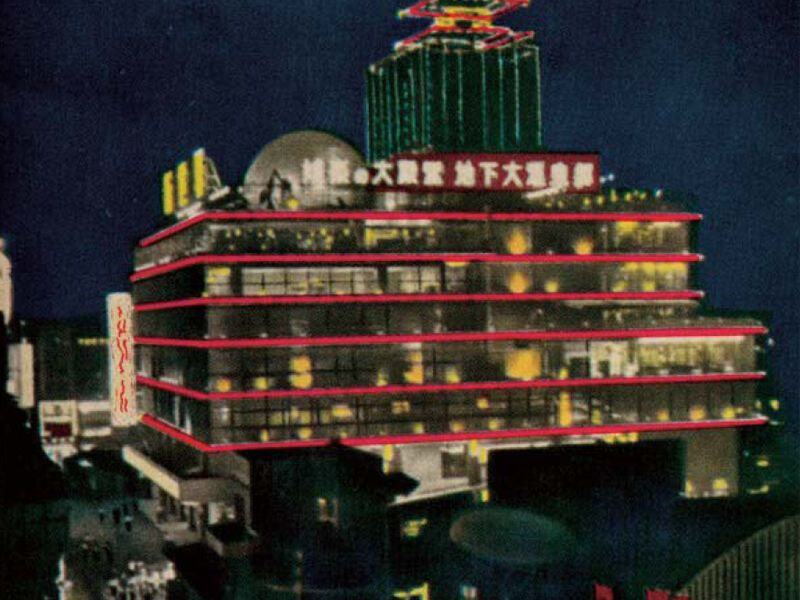
Shinsekai
In 1959, Rakutenchi Amusement Park and the Tokyu Group established the Shinsekai Building entertainment complex on the reclaimed site of Hyoutaike Pond.
The five-story pagoda of Shinsekai floating in the night sky was familiar to Asakusa children.
There was also an indoor amusement park, a planetarium, and other children's playgrounds.
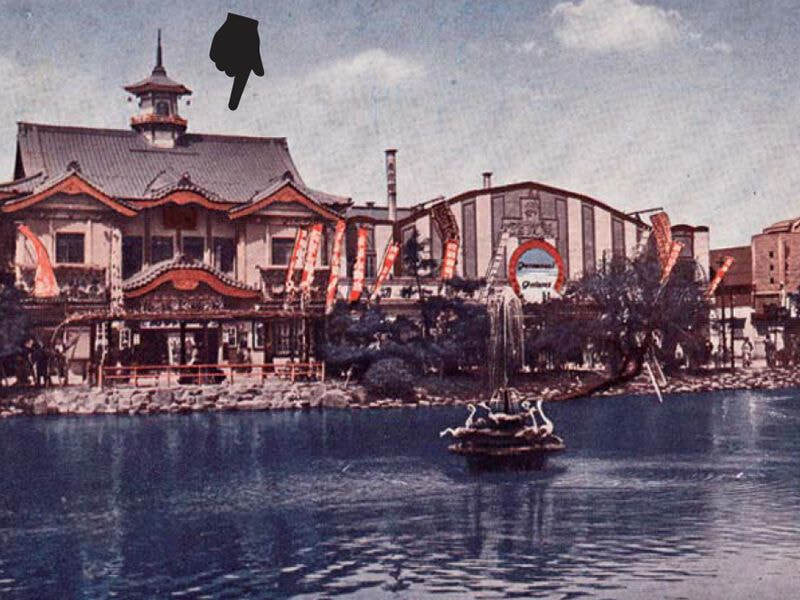
Manseiza
In 1935, there was a light theater "Manseiza" under the direct management of Yoshimoto Kogyo. The revue troupe "Gran Tekkar" was the exclusive organizer of revues and light theater performances.
The main members of the Grand Tekkar included Junzaburo Ban, Yoshio Kawada, Kiton Masuda, and Toshiko Tanizaki.

Chiyoda-kan
In 1911, the "Chiyoda-kan" movie theater opened on the site of the "Meiji-kan", which was famous for its daikagura (Japanese classical music and dancing), as a movie theater for "Nippon Katsudo Shashin Kabushiki Kaisha".
After that, it became "Taisho Katsudo Eiga" in 1920, "New Toho's Seated Theater" in 1961, "Chuei's Adult Movie Theater" in 1961, and closed in 1976.

Sanyukan
The "Sanyukan" of Asakusa Opera was demolished due to forced evacuation (1907-1944).
In 1951, Toyo Kogyo acquired the site and opened the "Franceza" strip theater. As the "Toyo Theater," it produced Kiyoshi Atsumi, Kinichi Hagimoto, and Beat Takeshi, among others.

Jobankan
In the late Taisho period (1912-1926), the "Asakusa Opera" era, it was the site of "Kinryukan", the basis of the "Negishi Grand Opera Company".
After the war, it was known as the Asakusa Roxy Movie Theater, and later as the Asakusa Shochiku Movie Theater, which was used to release Shochiku movies, but closed in 1991, ending its 80-year history.

Luna Park
In 1910, Japan's first amusement park, Luna Park, modeled after the American amusement park Coney Island, was located on the site of the former Japan Panorama Pavilion.
It was popular for its 15-meter-high artificial waterfall and train activity photo studio, but unfortunately, it was destroyed by fire six months after its opening.

Fuji-kan
The Fuji-kan was the first joint stock company in the Japanese movie industry, opened in 1908.
It was a huge movie theater with a capacity of 1,800 people, attracting men and women of all ages.
It was renamed "Asakusa Nikkatsu Gekijo" (Asakusa Nikkatsu Theater) and closed in 1973.
The site became a cabaret.

Daishokan
"Daishokan" movie theater opened in 1908.
In 1945, with the revival of the Shochiku Revue, it became a permanent theater, but later reverted to a Western-style road show theater.
The building was surrounded by an iron fence and abandoned for many years.
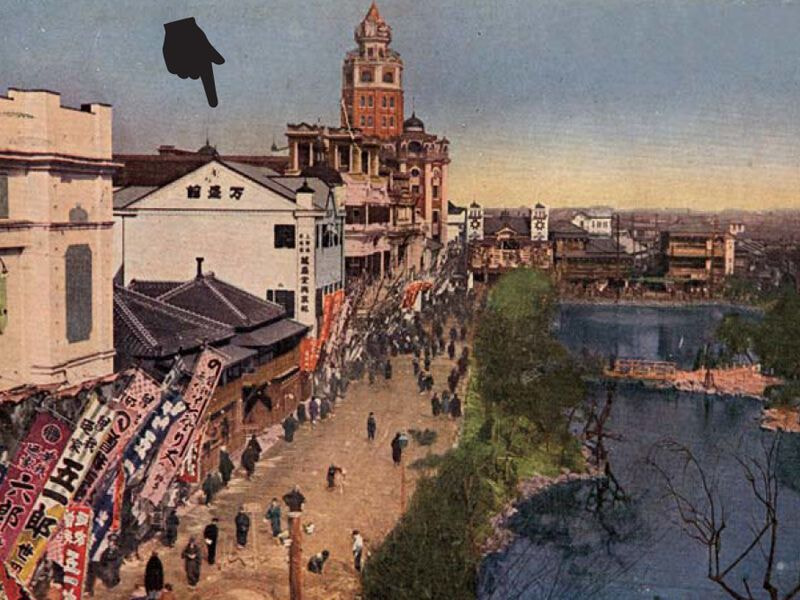
Mansokukan
"Light Theatre" This is the site of "Yurakukan" and "Kinema Club (Kawai Kinema)".
Densuke Omiya, who dominated the Asakusa comedy world and television after the war, gained popularity by appearing at the Kawai Kinema, a small movie theater, and began appearing at Yoshimoto Kogyo theaters in Tokyo.

Gourd Pond
In 1952, in order to raise funds to rebuild the five-story pagoda of Sensoji Temple, Rakutenchi acquired the southern half of the site of the reclaimed Gourd Pond and established the Asakusa Takarazuka Theater.
The Asakusa Takarazuka Theatre was established to raise funds to rebuild the five-story pagoda of the Asakusa Temple.
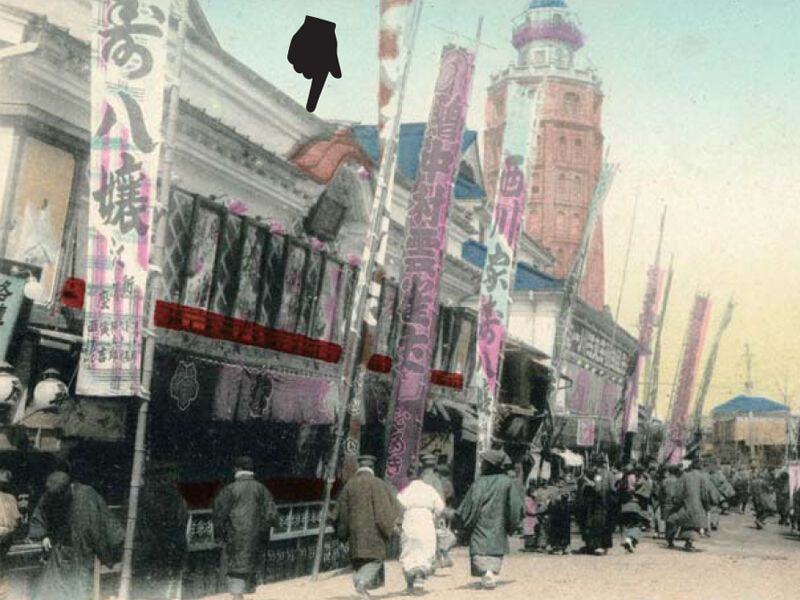
Taiseikan and Seiyukan
"Taiseikan", famous for "Egawa no Tamanori", opened in 1884 as a show house in the early days of the Roku-ward district.
In 1927, the neighboring Seiyukan theater was merged into the Asakusa Shingekaikan, which houses the Asakusa Shingekijo Theater, Asakusa Sekai-kan, and Asakusa Cinema.
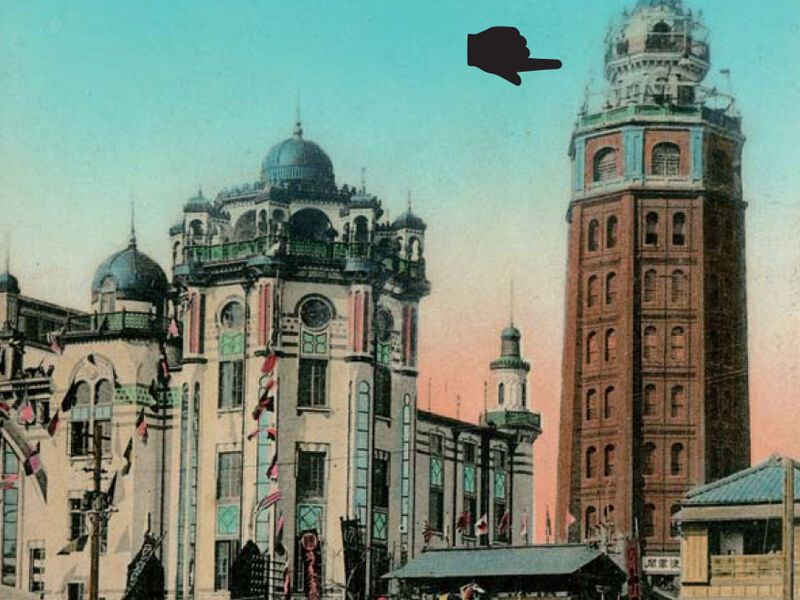
Ryounkaku (Asakusa 12F) , Yurakukan
In 1890, the tallest tower in the East, "Ryounkaku (Asakusa 12F)" was built.
However, it collapsed due to the Great Kanto Earthquake, and the site was transformed into "Showaza" by Yoshimoto Kogyo and later into "Asakusa Toei Theater" and "Asakusa Toei Palace" movie theaters, which were closed in 2003 due to the aging of the buildings.
